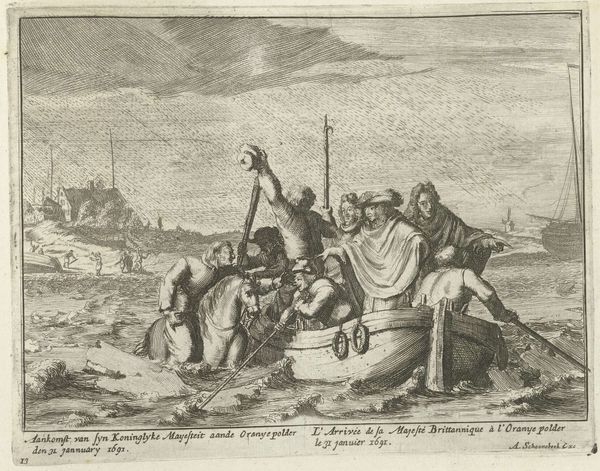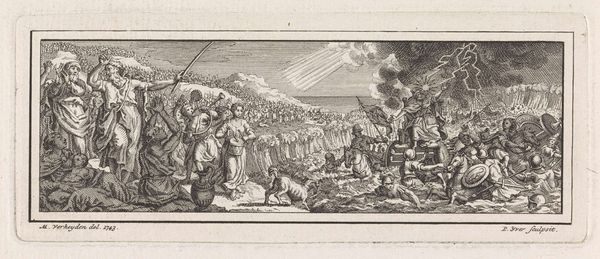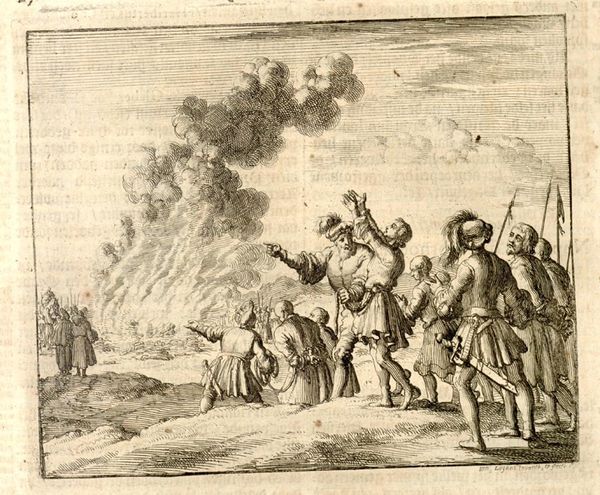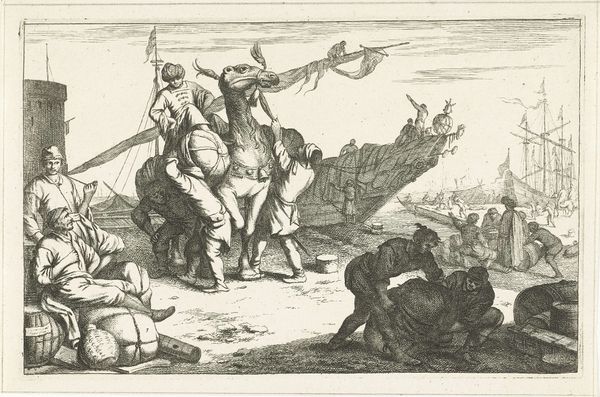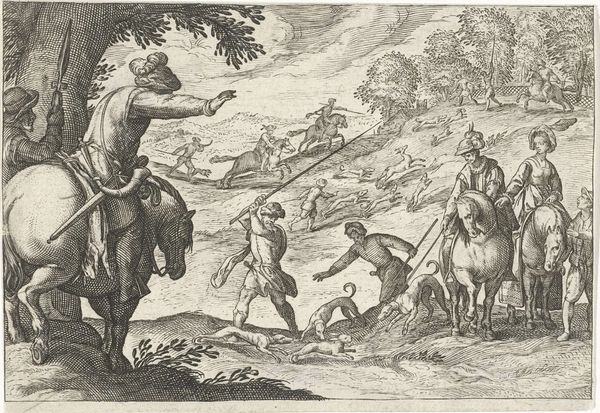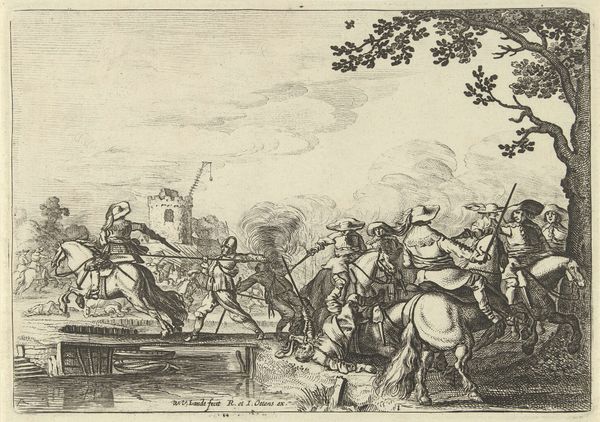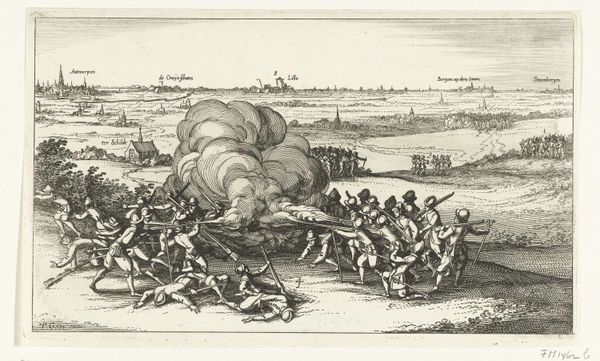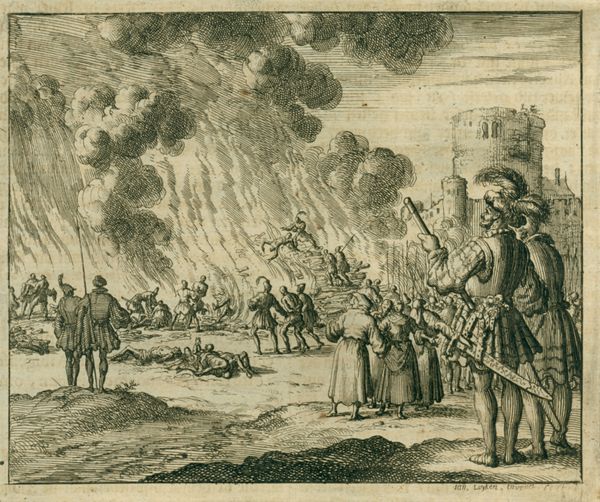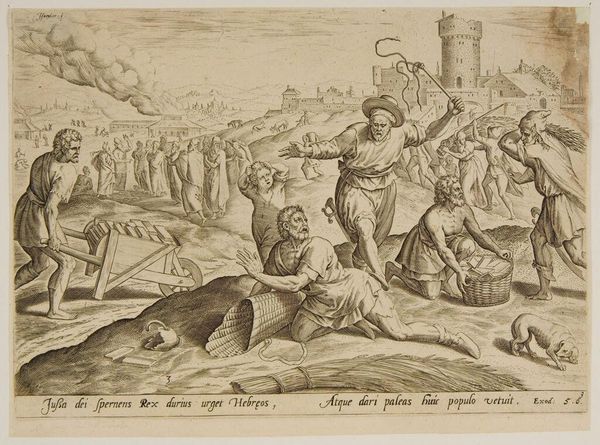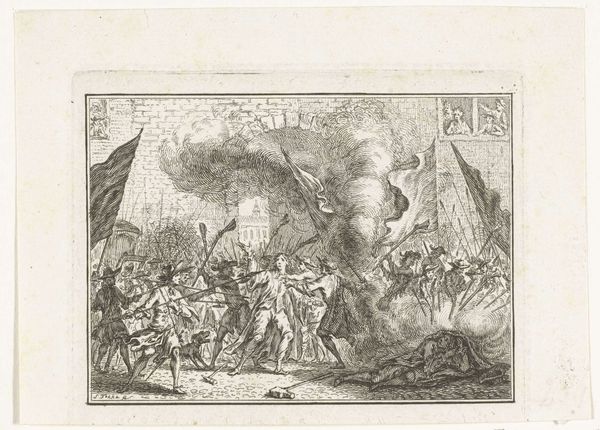
print, etching, ink, pen
#
narrative-art
#
baroque
# print
#
pen sketch
#
etching
#
landscape
#
figuration
#
ink
#
pen
#
history-painting
Dimensions: height 116 mm, width 149 mm
Copyright: Rijks Museum: Open Domain
Editor: Here we have M. Schaep's etching from 1649, titled "Islamitische galeislaven op het strand," or "Islamic Galley Slaves on the Beach". There's such stark contrast in the way the figures are rendered, and that massive plume of smoke dominates the scene. What do you see in this piece, especially considering its historical context? Curator: What immediately strikes me is the depiction of power dynamics. Consider the title – it’s presenting a specific viewpoint. We must critically analyze how the artist is choosing to represent these individuals, labeled as "Islamic galley slaves." Are they being depicted as victims, or is there something else at play? Editor: It's definitely uncomfortable to think about the gaze involved here. The figures on the left, who I assume are the overseers, seem so detached. Curator: Precisely. The etching needs to be contextualized within the history of Dutch maritime power, trade, and unfortunately, also enslavement. The scene is rendered with enough detail to suggest witnessing, almost inviting a sense of participation through observation. How does this image position the viewer? Is it asking us to empathize, or is it reinforcing a hierarchy? Editor: I didn't consider that aspect before. I was mainly focusing on the composition and the sort of narrative elements. Curator: Exactly, and that is a key move of Baroque art: drama! This image presents more questions than answers, doesn't it? Consider also that even representations of historical events, especially those involving marginalized groups, are rarely neutral. They carry within them the ideologies of the time. Editor: It makes me think about who was commissioning these images and for what purpose. It changes the way I see the artwork itself. Thank you! Curator: And that shift in perspective is exactly the point. It's about engaging with art, with history, and with the complexities of power.
Comments
No comments
Be the first to comment and join the conversation on the ultimate creative platform.

